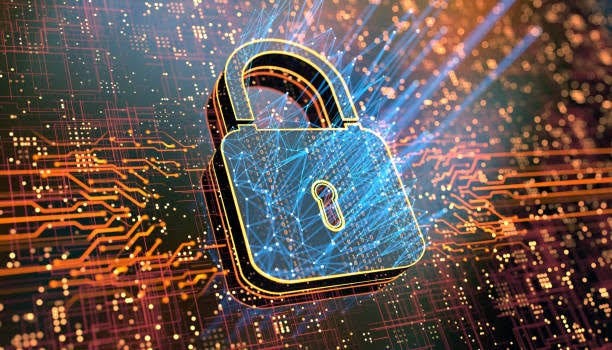We share so much of our lives online, from banking and shopping to connecting with friends and storing personal photos. While this digital connection offers incredible convenience, it also opens us up to risks we might not think about every day. Hackers are constantly looking for ways to access our personal information, but the good news is that you don’t need to be a cybersecurity expert to keep them at bay.
Protecting your digital life is not about building an impenetrable fortress; it’s about creating layers of security that make it much harder for unauthorized individuals to break through. By adopting a few simple, consistent habits, you can significantly reduce your vulnerability to cyber threats. This guide will walk you through straightforward, actionable steps to secure your online presence. From strengthening your passwords to being smarter about what you click, you’ll learn how to take control of your digital safety and gain peace of mind.
Understanding Common Hacking Techniques
Before you can effectively protect yourself, it helps to understand what you’re up against. Hackers use a variety of methods to gain access to your information, but many attacks fall into a few common categories. Knowing how these techniques work is the first step in learning how to avoid them.
Phishing: The Art of Deception
Phishing is one of the most common and effective hacking methods. It involves tricking you into voluntarily giving up your personal information, like passwords, credit card numbers, or social security numbers. Hackers do this by sending deceptive emails, text messages, or direct messages that appear to be from a legitimate source, such as your bank, a social media platform, or a popular online service.
These messages often create a sense of urgency, telling you that your account has been compromised, a payment has failed, or you’ve won a prize. They’ll include a link that directs you to a fake website that looks identical to the real one. Once you enter your login details on this fraudulent site, the hackers capture your credentials.
Malware: The Malicious Intruder
Malware, short for malicious software, is a broad term for any software designed to harm or exploit your computer or network. This includes viruses, spyware, ransomware, and trojans. Malware can be installed on your device without your knowledge, often by clicking a malicious link, downloading an infected file, or even visiting a compromised website.
Once on your system, malware can perform a range of damaging actions. Spyware can secretly record your keystrokes to steal passwords, ransomware can encrypt your files and demand a payment for their release, and viruses can corrupt your data or spread to other devices.
Password Attacks: Cracking the Code
Your passwords are the keys to your digital life, and hackers have several ways to try and steal them. A brute-force attack is where a hacker uses software to systematically guess millions of password combinations until they find the right one. This is why short, simple passwords are so easy to crack.
Another method is a dictionary attack, which uses a list of common words and phrases. Hackers also rely on information from data breaches. When a company’s database is hacked, lists of usernames and passwords often end up on the dark web. If you reuse the same password across multiple sites, a breach at one company can compromise your accounts everywhere.
Step 1: Strengthen Your Passwords
Your first line of defense is a strong password. A weak password is like leaving your front door unlocked. Creating strong, unique passwords for all your accounts is one of the most effective ways to protect yourself from unauthorized access.
How to Create a Strong Password
A strong password is long, complex, and unpredictable. Here are some key principles to follow:
- Make it long: Aim for at least 12 characters. The longer a password is, the harder it is for brute-force attacks to crack.
- Use a mix of characters: Include a combination of uppercase letters, lowercase letters, numbers, and symbols (like !, @, #, $).
- Avoid personal information: Don’t use your name, birthday, pet’s name, or other easily guessable information. Hackers can often find this information on your social media profiles.
- Think in passphrases: Instead of a single, complex word, consider using a passphrase—a sequence of random words. For example, “CorrectHorseBatteryStaple” is much stronger and easier to remember than “P@ssw0rd1!”.
Use a Password Manager
Remembering dozens of unique, complex passwords is an impossible task for most people. This is where a password manager comes in. A password manager is a secure, encrypted application that generates, stores, and fills in your passwords for you.
You only need to remember one strong master password to access your vault. The manager handles the rest, creating highly complex passwords for each of your accounts. Popular and reputable password managers include 1Password, Bitwarden, and Dashlane. They not only improve your security but also make logging into your accounts much more convenient.
Step 2: Enable Two-Factor Authentication (2FA)
Two-factor authentication adds a crucial second layer of security to your accounts. Even if a hacker manages to steal your password, they still won’t be able to log in without the second verification factor. It’s one of the single most important security measures you can take.
How 2FA Works
When you enable 2FA, logging in becomes a two-step process. First, you enter your password as usual. Then, you must provide a second piece of information to prove your identity. This second factor usually comes from one of three categories:
- Something you know: A PIN or the answer to a security question.
- Something you have: A code sent to your phone via SMS, a code from an authenticator app (like Google Authenticator or Authy), or a physical security key.
- Something you are: A fingerprint or facial scan (biometrics).
Authenticator apps are generally more secure than SMS codes, as text messages can be intercepted. Enable 2FA on all your important accounts, especially email, banking, and social media.
Step 3: Keep Your Software and Devices Updated
Software updates can sometimes feel like a nuisance, but they are essential for your digital security. Developers regularly release updates not just to add new features, but also to patch security vulnerabilities that hackers could exploit.
When a security hole is discovered, developers work quickly to fix it. By delaying your updates, you are leaving your device exposed to known threats. This applies to your computer’s operating system (like Windows or macOS), your web browser, your antivirus program, and all the applications on your phone and computer. Enable automatic updates whenever possible to ensure you’re always protected without having to think about it.
Step 4: Be Careful What You Click
As we’ve learned, many cyberattacks rely on tricking you into taking an action, like clicking a malicious link or downloading an infected file. A healthy dose of skepticism is your best defense against these phishing and malware attacks.
Before clicking a link in an email or message, hover your mouse over it to see the actual destination URL. If the URL looks suspicious or doesn’t match the supposed sender, don’t click it. Be wary of unexpected attachments, even if they appear to be from someone you know. If you receive an urgent request from a service like your bank, go directly to their official website by typing the address into your browser instead of clicking the link in the email.
Step 5: Use a VPN on Public Wi-Fi
Public Wi-Fi networks in cafes, airports, and hotels are convenient, but they are also notoriously insecure. Because they are open, hackers can easily position themselves on the same network to spy on your internet traffic and steal your data.
A Virtual Private Network (VPN) protects you by creating a secure, encrypted tunnel between your device and the internet. This means that even if a hacker is on the same network, all they will see is scrambled data. Using a VPN is a must whenever you connect to a public Wi-Fi network, especially if you plan on accessing sensitive information like your bank account or email.
Step 6: Secure Your Social Media Accounts
Your social media profiles contain a wealth of personal information that can be used against you by hackers for social engineering or identity theft. Take a few minutes to review and tighten your privacy settings on platforms like Facebook, Instagram, and X (formerly Twitter).
Limit who can see your posts and personal information, such as your birthday, phone number, and location. Be cautious about the information you share publicly. Think twice before participating in viral quizzes or games that ask for personal details, as these are often designed to harvest data.
Step 7: Back Up Your Data Regularly
Even with the best security measures, data loss can still happen. A hard drive can fail, a device can be lost or stolen, or a ransomware attack could encrypt all your files. Regularly backing up your important data ensures that you can recover it in the event of a disaster.
You can back up your files to an external hard drive or use a cloud backup service like Google Drive, Dropbox, or a dedicated backup solution like Backblaze. For maximum security, consider the 3-2-1 backup rule: keep at least three copies of your data, on two different types of media, with one copy stored off-site (in the cloud, for example).
Frequently Asked Questions (FAQ)
What’s the first thing I should do if I think I’ve been hacked?
If you suspect an account has been compromised, the first step is to change the password immediately. If you can still log in, enable two-factor authentication if you haven’t already. Check your account activity for any suspicious actions. If it’s a financial account, contact your bank or credit card company to report the breach and monitor your statements.
Is it really necessary to use a different password for every site?
Yes, absolutely. Data breaches are common, and when one site is hacked, your username and password can be exposed. If you use that same password on other websites, hackers will try it on your other accounts, like email and banking, leading to a widespread compromise. A password manager makes using unique passwords for every site easy.
Are public Wi-Fi networks always dangerous?
Not always, but the risk is significant enough that you should always be cautious. Unsecured public networks make it easy for hackers to intercept your data. If you must use public Wi-Fi, avoid accessing sensitive accounts and use a VPN to encrypt your connection for protection.
How can I tell if an email is a phishing attempt?
Look for red flags like a sense of urgency, generic greetings (“Dear Customer”), spelling and grammar mistakes, and a sender email address that doesn’t match the company’s official domain. Hover over links to check their true destination before clicking. When in doubt, don’t click anything and visit the official website directly.
Take Control of Your Digital Security
Protecting your digital life doesn’t require technical genius; it requires awareness and consistency. By implementing these simple steps—using strong passwords and a password manager, enabling 2FA, keeping software updated, and being cautious online—you create a robust defense against most common cyber threats. Think of it as a series of small habits that, when combined, provide powerful protection for your most valuable information. Start today, and make your digital life a safer place.

